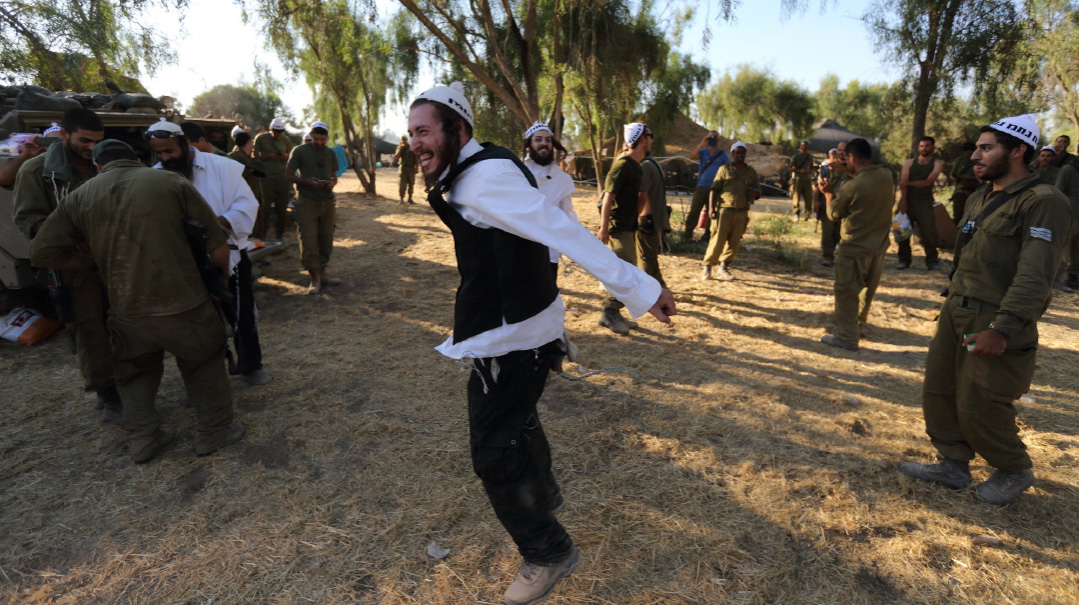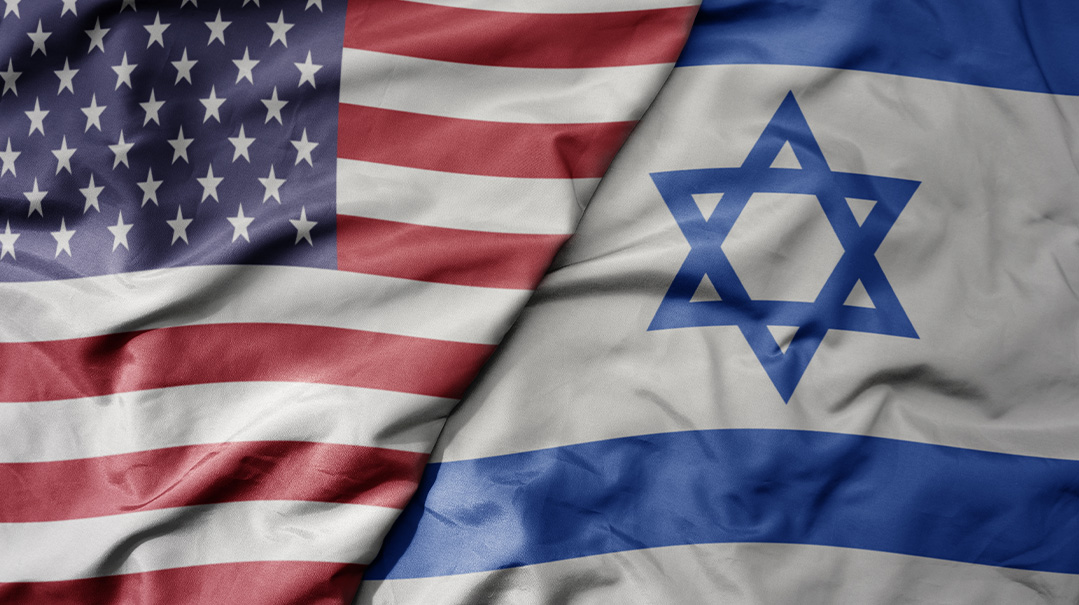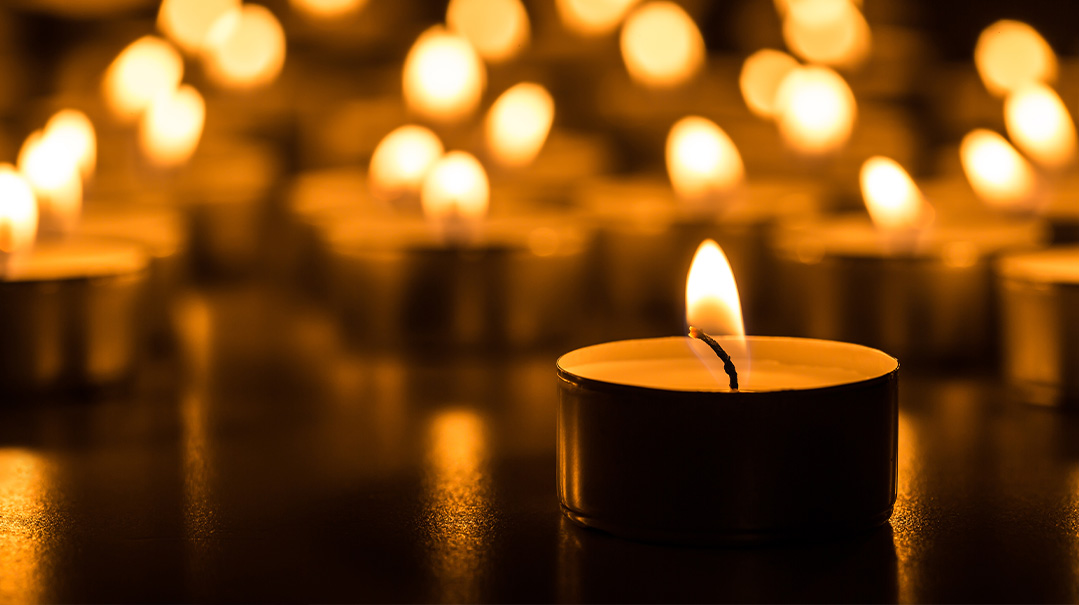Remembering Rav Moshe Shapira on His 7th Yahrtzeit

Looking into the Sun, by Rabbi Menachem Nissel, is the first full-length biography of Rav Moshe Shapira ztz”l

Photo: Mattis Goldberg
MY friend Rabbi Menachem Nissel has produced the first full-length biography of Rav Moshe Shapira ztz”l, almost certainly the most influential Torah thinker in recent decades. I would not be surprised if it is not the last biography. Not because it is not an excellent work — it is — but because Rabbi Nissel’s intention was never to write a comprehensive biography, as the title makes clear: Looking into the Sun: A Taste of the Life, Torah, and Legacy of Rav Moshe Shapira through the Lens of One Talmid.
Looking into the Sun is a brilliant title. Just as we cannot look into the sun without going blind, but rather we know the sun by virtue of the light it casts and the heat it provides, so, too, the light of Rav Moshe is so bright that he can only be discerned by the cumulative impact of his Torah on the thousands who hung upon his words.
Rabbi Nissel makes this point in his Preface and Disclaimer, which is based on one of the many hespedim given by Rav Aaron Lopiansky: “The closer we got, the more each gravitated naturally/To different facets of his Torah teachings, and personality/Mishoresh nishmaseinu, the uniqueness of our humanity/We heard the same words, but for each it resonated differently.... If we each give a hesped, from our own point of view,/Then the sum of our words will give us a clue,/How to echo the greatness of the rebbi we knew....”
Though Rabbi Nissel quotes over 200 talmidim of Rav Moshe, Looking into the Sun is very much a personal memoir of a rebbi-talmid relationship, albeit that of a very close talmid. I first met Rabbi Nissel over 40 years ago, around the same time he joined the shiur given by Rav Moshe at Mishkan HaTorah. His brilliant smile made him one of the most beheint people I have ever met (and that has not changed over the decades), and Rav Moshe felt the same way. Rabbi Nissel was a yeled sha’ashua in the Shapira household. Where others trembled before summoning up the courage to speak to Rav Moshe, he was never afraid to ask questions, many of them while driving Rav Moshe to the mikveh Erev Shabbos after a shiur. And he consulted with Rav Moshe on every aspect of his life.
Despite the work’s length — nearly 450 pages, because it is, in part, a memoir — the reader will gain only a sketchy idea of the chronology of Rav Moshe’s life. And many important groups of talmidim are almost entirely omitted. Among them, the groups of roshei yeshivah and leading Torah scholars with whom Rav Moshe learned sisrei Torah; the highly talented baalei teshuvah, both American and Israeli, whom Rav Moshe mentored in the Ohr Somayach kollel, after succeeding Rav Dov Schwartman ztz”l; the balabatim, many of them Torah scholars in their own right, who accompanied him on European trips in his later years, in part to support the Israeli avreichim to whom Rav Moshe felt a lifetime obligation, after having brought them to a life of Torah. A rosh kollel once told me that he never saw Rav Moshe so animated as when speaking to not-yet-observant young Jews who addressed him with the familiar “you.” Those encounters, too, are not part of this story.
BESIDES THE DEPTH of his Torah and the wide diversity of talmidim with whom he interacted, there is another difficulty in capturing Rav Moshe: his consciousness of his own uniqueness and his determination to preserve his internal life from view.
Rabbi Motty Cohen ztz”l accompanied Rav Moshe on several trips abroad. Toward the end of a long day of shiurim in South America, Rav Moshe informed Rabbi Cohen that he would have to cancel the upcoming shiur, as he was too weak from fasting. Rabbi Cohen expressed his surprise, and told Rav Moshe that his rebbeim had always taught him that talmud Torah is the most important mitzvah, and therefore he was puzzled that Rav Moshe did not simply eat prior to giving the next shiur.
Rav Moshe replied: “They want to hear my Torah. And without my fasting, it is not me.”
Silence was a crucial part of the Torah Rav Moshe transmitted. He once found himself seated on an international flight next to a renowned professor, who pushed him for a sample of his chiddushim. Rav Moshe’s curt answer: “By us, silence is also an option.”
BUT IF LOOKING INTO THE SUN is not a comprehensive portrait of Rav Shapira, a goal that Rabbi Nissel explicitly eschewed and which is, in any event, impossible, it will nevertheless bring delight to the thousands who hung on his every word, and provide an invaluable introduction to all those talmidim and talmidos who find themselves wondering, “Who was this Rav Moshe about whom my rebbi never stops speaking?”
I do not count myself a talmid, though Rav Moshe served as a sandek for one son and as mesader kiddushin for another, and I attended his public Thursday night shiur for many years and a small chaburah in perek Cheilek. I simply never worked hard enough on Rav Moshe’s sources or developed my own Torah insights based on his yesodos to be called a talmid. The essence of man as b’tzelem Elokim is to be a creator, Rav Moshe always stressed — and “not just rearrange the furniture,” as he put it in one Tu B’Shevat shiur. One who did not build on his Torah cannot be called a talmid.
Yet I found myself openly weeping many times while reading Looking into the Sun: Weeping for the magnitude of the loss, even for those of us who only hovered in the distance; weeping for the failure to have taken opportunities to draw closer; weeping over the stories of his love for every talmid and every Jew.
Rav Aaron Lopiansky used the mashal of a great artist suddenly deprived of the ability to see colors (based on a true case recorded by Dr. Oliver Sachs) to describe the world without Rav Moshe. But he adjured his listeners not to grow used to a world devoid of color — as did the artist in question, who rejected an operation to restore his sense of color, after having mastered working in shades of charcoal.
The amount of Torah that Rav Moshe taught is simply unfathomable. For decades, he gave over 30 shiurim a week, most of them in small chaburos, and each in a different sefer. One chaburah in Mishnayos Taharos has already produced over 800 pages of chiddushim on Maseches Keilim alone. Only by overcoming the need for sleep to a degree almost humanly impossible could one person, no matter how brilliant, have absorbed and taught so much Torah.
Well over 10,000 recorded shiurim of his Torah are available. Though only a fraction of his output, they alone are a lifetime’s worth of study. And new seforim based on his shiurim pour forth in a seemingly endless profusion.
But even if we possessed all the Torah he taught, the impact of his loss would still be immense. He once described his mission as teaching emunah. And for many of us, just experiencing his presence was the strongest bulwark of our emunah. For we knew that whatever questions or challenges we faced, there was one Jew in the world who had resolved all those questions and for whom the entire Torah was a seamless web. Comparing notes with those in other chaburos, we would realize that he had conveyed similar messages in a given week, even while remaining faithful to widely divergent texts — perek Cheilek, the Rambam’s Hilchos Talmud Torah, Pirkei Avos.
He pushed his talmidim to bring Torah wherever he felt they could add to the Torah being taught — Rav Aaron Lopiansky to Silver Spring, Rav Yehoshua Hartman and Rabbi Akiva Tatz to London, Rabbi Menachem Nissel to Memphis, and Rabbi Yehuda Polishuk to create a whole network of Torah programs in the Israeli school system.
Rav Moshe’s personality was not warm and fuzzy. No one in one of his shiurim doubted that he could turn us to a “bag of bones” with one piercing look. A frequent host abroad confided that at the breakfast table with Rav Moshe, all one could hear was the clink of the silverware on the china, so reluctant were even close talmidim to initiate discussion with him.
It is a testimony to Rabbi Nissel’s courage that he was able to write Looking at the Sun, even with Rav Moshe’s intense visage ever before him and knowing the disgust he would have felt at any exaggeration or other inappropriate observation. And it is one of his signal contributions to have used his unique vantage point to convey the intensity of the emotions — in particular, Rav Moshe’s passionate love of both his talmidim and any Jew in need — and breadth of curiosity about every aspect of Hashem’s world that lay behind the intensity of his stare.
Rabbi Nissel synthesizes some of Rav Shapira’s crucial ideas in more than 20 chapters, in order to make them more accessible to a general audience. (Many of those chapters had their origins in the pages of Mishpacha.) While the elegance of the structure of Rav Moshe’s shiurim is lost in the process, the ideas still astound. One that stuck out for me was Rabbi Nissel’s treatment of the brachah she’asani kirtzono, which a woman recites in the morning. The subject is dealt with in his forthcoming expanded edition of Rigshei Lev on women’s tefillah.
Hashem, Who is complete unto Himself, created the world for no reason other than His desire (ratzon) to share His goodness. So too a woman has no obligation to bear and raise children, to marry, to facilitate her husband’s and sons’ Torah learning. And yet she does all these things out of a desire (ratzon) to give. When she recites the blessing in the morning, she is saying: “Your will is unconditional giving, and in that You find Your ultimate simchah. My will is unconditional giving, and in that I find my ultimate simchah. Thank You, Hashem, for having made my will the same as Your will.”
Looking into the Sun is far from a storybook. Rather Rabbi Nissel employs the technique first developed in Mishpacha of using stories of Rav Moshe to illustrate the Torah ideas. Yet the stories are powerful.
A cabdriver once told Rabbi Mordechai Becher, a close talmid, that he had become shomer Shabbos through Rav Moshe. The cabdriver lived close to the Shapiras on the outskirts of Bayit Vegan, and drove Rav Moshe from time to time.
At the end of one trip, Rav Moshe grasped the driver’s hand in his, and asked, “You don’t drive this cab on Shabbos, do you?”
On the spot, the driver resolved to become shomer Shabbos so as not to have to lie to Rav Moshe. But Rabbi Nissel adds one more telling detail. Rav Moshe and his rebbetzin used to invite the cabdriver and his wife for Shabbos meals.
Stories proliferate of his uplifting words to people who had no idea who he was. My friend Rabbi Benzion Kermaier once accompanied Rav Moshe to the Kosel to daven. Rav Moshe davened a particularly long Shemoneh Esreh, during which three minyanim came and went. During one of those minyanim, a young man with a tiny kippah leading the davening had struggled during chazaras hashatz and been summarily removed in the middle by some impatient members of the minyan.
When he finished davening, Rav Moshe saw the young man sitting dejectedly at the back of the Kosel Plaza. He sat down next to him, put his arm around him and caressed his cheek.
“They say I am a big rabbi, so I want you to know that in Heaven, the prayers you said are exceedingly precious. Hashem appreciates them more than you can ever know,” he told him. And then he added, “I’m asking you to find a place in your heart to forgive them for the way they treated you.”
And he was unsparing with himself in terms of the lengths to which he would go to lift the burden from the shoulders of those who approached him. He fasted frequently for particular talmidim or members of their family. Decades ago, he wrote a letter of guidance to a talmid whose wife had given birth to a baby with Down syndrome. Since then, that letter has probably brought consolation to thousands of other parents in the same situation.
Just as his Torah was at a different level, so was the power of his emotions. Upon landing in Mexico City for the first time, Rav Moshe stared out the plane window at the vast expanse of slums below. He later commented that the sight of human suffering on that scale would leave him unable to sleep that night. After touring Auschwitz-Birkenau, and also after viewing Fort Nine, in which much of the Kovno ghetto, including Rav Elchonon Wasserman Hy”d, was wiped out, Rav Moshe was too overwhelmed to give his planned talks.
And just as he saw more in the words of Torah than most of us could fathom, so too did his vision absorb more of the wonders of Hashem’s world. On a trip to Switzerland, he spent much of one night gazing at the stars. In London, he took nightly walks in the wee hours of the morning, along the banks of the Thames with talmidim. He also insisted on visiting Buckingham Palace and viewing the crown jewels at the Tower of London.
The White House left him even less impressed than Buckingham Palace. I was part of a group that joined him late at night to walk around the White House gates. He made it clear that he was unawed by the seat of American “malchus,” though tripping over a homeless man on the sidewalk might have contributed to that judgment.
The Jewish world owes an immense debt of gratitude to Rabbi Nissel for the five years of intense effort that went into his intimate portrait of his beloved rebbi. He has shone his light into hidden corners of Rav Moshe’s personality and brought out aspects of his Torah — e.g., his discussion of the fifth galus of Yishmael — that has only grown in relevance with the passage of time since his passing on Asarah B’Teves, described by Chazal as the darkest of the fasts at the darkest time of the year.
(Originally featured in Mishpacha, Issue 991. Yonoson Rosenblum may be contacted directly at rosenblum@mishpacha.com)
Oops! We could not locate your form.







